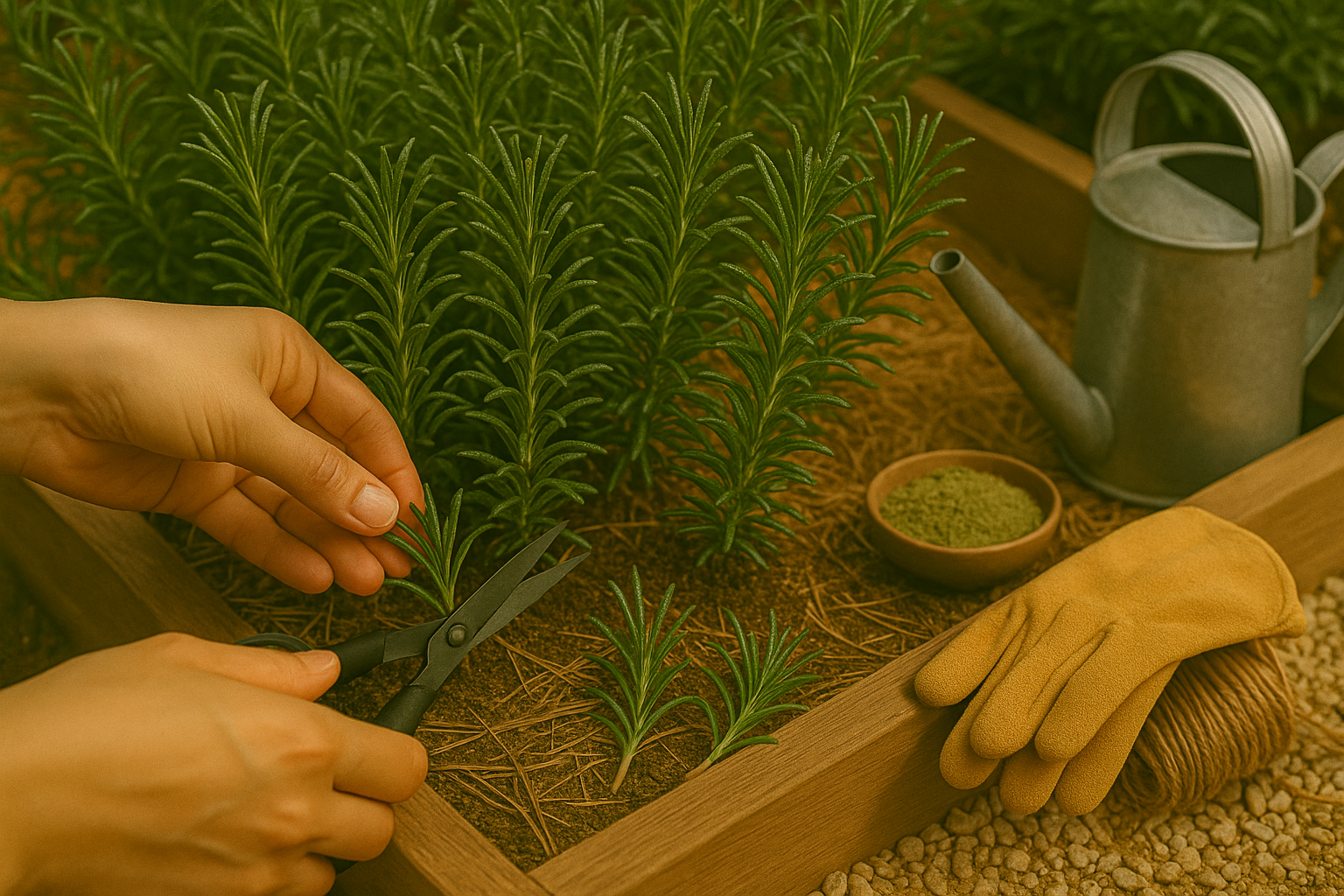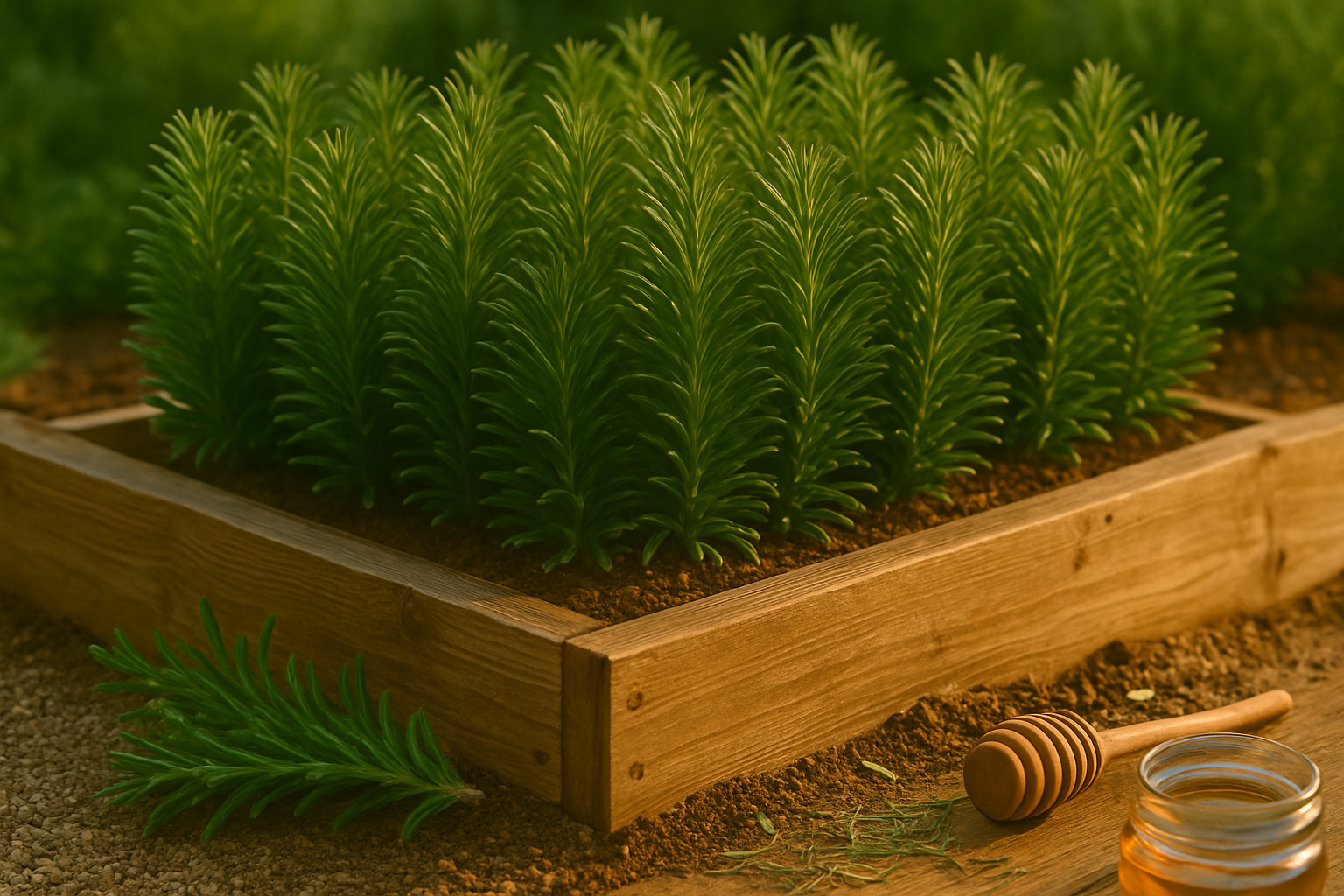Introduction to Growing Rosemary in Raised Beds
Rosemary raised bed gardening is becoming increasingly popular among home gardeners due to its practicality and rewarding results. Rosemary, known for its distinctive piney aroma and rich, savory flavor, is a kitchen staple worldwide and a beautiful addition to any outdoor space. Raised beds offer several advantages over traditional in-ground planting when cultivating rosemary—think lighter, well-drained soil, better weed control, and improved protection against pesky root rot. Plus, the elevated structure helps keep this Mediterranean herb’s roots warm and dry, which is crucial for strong growth.
If you’ve struggled with soggy soil or crowded garden plots, rosemary raised bed gardening could be the perfect solution. This method isn’t just for experienced gardeners; even beginners can grow healthy, lush plants by following a few simple strategies. In this guide, we’ll walk you through the essentials of planting rosemary in raised beds, covering the best soil mixes and sunlight requirements. You’ll also find smart tips for ongoing care—watering, pruning, and pest management—tailored specifically for raised bed conditions. Finally, we’ll show you how to harvest your rosemary for maximum flavor and continuous growth. Whether you’re aiming for a thriving supply for culinary experiments or a fragrant, attractive garden corner, you’ll find everything you need right here.
Choosing the Right Raised Bed and Location

When growing rosemary, selecting the right raised bed and location is key to a healthy, thriving plant. Rosemary has deep roots and prefers well-aerated soil, so your raised bed should be at least 12 to 18 inches deep—this depth allows roots to expand and helps prevent waterlogging.
Cedar and redwood are popular choices for raised bed materials because they naturally resist rot and weather damage, ensuring your bed lasts for years. Good drainage is especially important for rosemary, which hates “wet feet.” Raised beds naturally improve drainage by lifting roots above compacted ground and allowing excess water to flow out more easily.
To further enhance drainage, you can layer coarse gravel or sand at the base of the bed and mix in gritty or sandy soil. Rosemary thrives in full sun, so choose a spot that receives at least 6 to 8 hours of direct sunlight daily. Protection from harsh wind is also essential, as rosemary’s stems can be brittle—planting near a fence, wall, or taller shrubs can offer a windbreak.
At the same time, place the bed somewhere convenient for easy harvesting, such as close to your kitchen door or main pathway. If you’re interested in companion planting, rosemary pairs well with drought-tolerant Mediterranean herbs like thyme, sage, and lavender, which all enjoy similar conditions.
Be mindful of spacing: plant rosemary about 2 to 3 feet apart to allow for air circulation and future growth, since mature plants can get quite bushy. Avoid crowding rosemary with water-loving plants like basil or mint, as they require very different moisture conditions.
With these tips, you’ll create an environment where rosemary can truly flourish.
Soil Preparation and Planting Rosemary
Getting the soil right is key to thriving rosemary. This herb loves well-draining, sandy or loamy soil with a neutral to slightly alkaline pH (around 6.5 to 7.5). For best results in raised beds, mix equal parts garden soil, coarse sand, and compost. You can also add a few handfuls of perlite or fine gravel to boost drainage—rosemary really hates soggy roots.
When it comes to planting, you have three main options: seeds, cuttings, or nursery transplants. Seeds are cheap but slow and sometimes fussy about germinating; you might wait several weeks to see sprouts. Cuttings give you a genetic clone of the parent plant, root faster (in 2–4 weeks), and are great if you have access to healthy rosemary stems. Nursery plants, while pricier, offer instant gratification and a big head start, making them the easiest choice for beginners.
To plant, dig holes spaced 18–24 inches apart so each plant has plenty of airflow—crucial for preventing disease. If you’re using transplants, plant them at the same depth they grew in their pots. For cuttings, bury the bottom third of the stem. For seeds, lightly press them onto the soil surface and barely cover with a sprinkle of soil, keeping them lightly damp until established.
Water thoroughly after planting, but let the soil dry slightly between sessions—rosemary prefers to stay on the dry side. The best seasons for planting in raised beds are spring or early fall, when the weather is mild and roots can establish before extreme heat or cold hits. In hot climates, fall planting helps roots settle in before the summer sun gets intense.
Following these guidelines sets up your rosemary patch for easy, low-stress success.
Caring for Rosemary in Raised Beds

Rosemary thrives in raised beds where soil drains quickly, but it’s easy to overwater this Mediterranean herb. Always check the soil before adding more moisture. Wait until the top inch feels dry, then water thoroughly at the base—typically once a week or less, depending on your climate—making sure the roots don’t sit in soggy soil. Overwatering can quickly cause root rot.
When it comes to fertilizing, rosemary is not a heavy feeder; an annual application of slow-release, balanced fertilizer in early spring (or some homemade compost) usually provides enough nutrients for the season. Avoid using high-nitrogen fertilizers, which may cause leggy growth and reduce the herb’s flavor.
To keep plants looking full and encourage lush, bushy growth, lightly prune rosemary several times throughout the growing season. Snip off up to a third of the stems, focusing on removing any leggy, woody branches or spent flower stems. Always cut just above a leaf node to help the plant branch out and maintain its shape. Don’t be afraid to harvest regularly, since rosemary responds well to trimming.
For mulch, use light materials like pine needles, pea gravel, or shredded bark to help suppress weeds and retain consistent soil moisture while allowing air to circulate freely around the plant’s base. Avoid thick, moisture-holding mulches that trap water near the roots.
As for weed control, regularly inspect your raised beds and pull any weeds by hand, as rosemary doesn’t compete well with aggressive invaders. Keeping the area around your plants tidy not only prevents competition for nutrients but also helps keep pests and diseases at bay.
With careful, minimal attention, you’ll be rewarded with healthy, fragrant rosemary all season long.
Common Problems and How to Manage Them
Rosemary is a hardy herb, but it’s not immune to pests and diseases. Common pests like spider mites, aphids, and whiteflies can damage rosemary by sucking sap from the leaves.
To manage these pests organically, try spraying the plant with a strong jet of water to dislodge insects, or use insecticidal soap or neem oil, focusing on the undersides of the leaves where pests often hide.
Fungal diseases such as powdery mildew and root rot are also common, especially if rosemary is kept too wet or in poor air circulation. To prevent these diseases, provide plenty of sunlight, plant in well-draining soil, and water at the base rather than overhead to keep leaves dry.
If you notice yellowing leaves, this is often a sign of overwatering or poor drainage. Allow the soil to dry out between waterings and consider repotting the plant if drainage is a problem.
Slow growth may indicate a lack of light or nutrients—make sure your rosemary gets at least six hours of sun daily and consider using an organic fertilizer sparingly.
Leggy, thin plants usually result from insufficient light. Move your rosemary to a brighter spot or trim it regularly to encourage bushier growth.
Regular pruning helps keep plants healthy, encourages new shoots, and reduces the likelihood of disease. By monitoring your rosemary and quickly addressing any issues, you’ll keep your plant lush and thriving.
Harvesting and Using Your Rosemary
The best time to harvest rosemary is in the morning, after the dew has dried but before the midday sun, when the essential oils that give it its signature aroma and flavor are at their peak. For regular use, snip off just a few inches of the tender top stems with sharp scissors, making your cuts above a leaf node to encourage bushier regrowth. Never take more than a quarter to a third of the plant at once if you want a thriving herb year-round.
When planning a larger harvest to dry rosemary, wait until the plant is mature and select healthy, non-flowering stems for the most intense flavor. Tie these larger cuttings into small bundles and hang them upside down in a dry, well-ventilated space out of direct sunlight—this maximizes both flavor and shelf life.
Fresh rosemary is fantastic for:
- Infusing olive oil
- Flavoring roasted potatoes
- Tucking into focaccia dough
- Perking up lemonade or cocktails with a single sprig
Dried rosemary works well in slow-cooked dishes, homemade spice blends, or as a fragrant addition to sachets for drawers and closets. Both fresh and dried forms make aromatic, all-natural cleaning sprays when simmered in water with lemon peels—an easy way to make the most out of your harvest and bring a fresh scent to your home.
Year-Round Rosemary Care and Overwintering
Rosemary is a hardy herb but can struggle in cold climates, especially when winters dip below 30°F (-1°C). If you live in a region with freezing temperatures, consider potting your rosemary in the fall so you can bring it indoors before the first frost.
Place the pot near a sunny, south-facing window—rosemary thrives with at least 6-8 hours of direct sunlight. If natural light is limited, supplement with a grow light to keep the plant healthy.
Outdoors, mulching around the base with straw or leaves offers some root protection, but covering the entire plant with a frost blanket provides extra security. Prune regularly to keep the bush compact, making relocation easier.
For those who want rosemary year-round, hydroponic kits or indoor planters work wonders. Just remember to water sparingly, as rosemary dislikes soggy soil. Avoid over-fertilizing; feeding once or twice during the growing season is sufficient.
Watch for powdery mildew indoors and maintain good airflow to prevent it. By rotating between outdoor growing in summer and indoor overwintering, your rosemary will stay productive and fragrant, giving you fresh herbs for cooking no matter the season.
Conclusion
Growing rosemary in raised beds is surprisingly simple and offers great benefits, from better drainage to easier weed control. This hardy herb thrives with minimal effort, making it perfect for both beginners and seasoned gardeners. Starting your own herb garden is a rewarding way to enjoy fresh flavors and enhance your outdoor space.
Give it a try and see how easy it can be! We’d love to hear about your experiences with rosemary—share your tips or questions in the comments. For more gardening inspiration, explore our other posts and start planning your next green project today!
